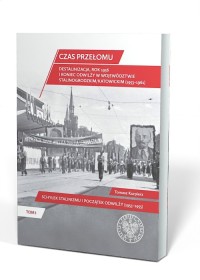Book description:
Tomasz Kurpierz’s monograph is the first volume of the publishing series The time of breakthrough. De-Stalinisation, 1956 and the end of the thaw in the Stalinogród/Katowice Voivodeship (1953–1961).
Stalin’s death in March 1953 triggered a power struggle in the Soviet Union, with the result that Moscow’s ability to pursue its previous style of imperial policy was temporarily diminished. In Poland, there had been no talk of any major changes that year yet. The inhabitants of Katowice and the entire voivodeship felt this particularly acutely when they were “honoured” with the new name of the city (Stalinogród) and the region (Stalinogród Voivodeship). In some spheres, for example in the policy towards the Catholic Church, the policy became even more stringent. But after a few months, the first, initially very small manifestations of a certain liberalisation began to appear. The gradual limitation of the Security Office’s activities culminating in its reorganisation, the somewhat bolder discussions within the Polish United Workers’ Party apparent from 1955 onwards, the changes in economic policy (attempts to move away from an extremely ideological to a slightly more pragmatic management of industry, especially mining), and finally the announcements of a certain reorientation in the policy of the communist authorities towards the native population in Upper Silesia - all this prepared the ground for a huge social upheaval in 1956. The monograph, one of the first studies of the decline of Stalinism in Poland from a regional perspective, attempts to describe these processes on the example of the Katowice/Stalinogród Voivodeship.
Published as part of the IPN Central Research Project: “Solidarity” and social resistance 1956-1989.
Publishing Series of the IPN Branch in Katowice

